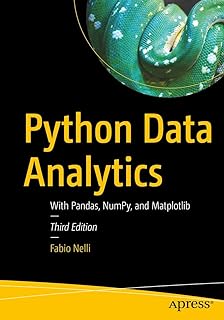
Machine Learning (ML) is a field of artificial intelligence (AI) that focuses on developing algorithms and models that allow computers to learn from data and improve their performance over time without being explicitly programmed. This approach is based on the idea that computers can learn from data, detecting patterns, relationships and regularities, and then apply that knowledge to new data without explicit programming.
[wpda_org_chart tree_id=20 theme_id=50]
The types of learning
Machine learning is a field of artificial intelligence and is essentially about developing algorithms and models that allow computers to learn from past data or experiences, progressively improving their performance on a given task or task without being explicitly programmed for it. This process occurs through the creation of statistical models that identify patterns in data and use them to make predictions or decisions.
There are three main types of learning in Machine Learning:
- Supervised Learning
- Unsupervised Learning
- Reinforcement Learning
But to this set we can add Deep Learning, even if today there is an increasing tendency to consider it a discipline in its own right, and Semi-Supervised Learning, a hybrid between the two Supervised-Unsupervised typologies.
In Supervised Learning, the model is trained on a set of known input and output data. The “supervisor” provides the model with pairs of input examples and their output labels. The main applications of this type of learning are classification (assigning a label to a piece of data) and regression (predicting a continuous value), but you can have many other applications where there is a clear relationship between input and output.
In Unsupervised Learning, the model is trained on unlabeled data. The goal is to find inherent patterns, structures, or groupings in the data without any external guidance. The main applications of this type of learning are Clustering (grouping similar data), dimensionality reduction (simplifying complex data), and data generation (creating new data similar to existing data).
Instead, Reinforcement Learning is based on the presence of an “agent” that learns through interaction with an environment. The agent makes decisions and receives feedback in the form of rewards or punishments. The applications for this type of learning are many and range from games, robotics, trading algorithms, and in general situations where the system must learn to make optimal decisions in a dynamic environment.
In addition to these main types, there is also Semi-Supervised Learning, which combines elements of Supervised and Unsupervised Learning using a partially labeled dataset.
Furthermore, Deep Learning is a subcategory of Machine Learning that uses deep artificial neural networks to learn complex representations from data. Deep neural networks are particularly effective at dealing with large amounts of data, such as images and text, and have led to significant advances in many applications, such as image recognition, natural language recognition, and content generation.
The field of Machine Learning is constantly evolving, with new algorithms, techniques and applications emerging regularly. Its ability to learn from data and improve performance over time makes it a powerful tool for solving a wide range of problems across multiple industries.

If you want to delve deeper into the topic and discover more about the world of Data Science with Python, I recommend you read my book:
Fabio Nelli
Further developments in Machine Learning
Transfer of Knowledge (Transfer Learning)
Transfer Learning is a technique in which a model trained on a specific task is reused as a starting point for another related task. This approach is useful when you have little data available for the target task. The lower layers of the pre-trained model capture general features, while the upper layers specialize in the specific task.
AutoML (Automatic Machine Learning)
AutoML aims to simplify the process of developing machine learning models, reducing the need for advanced technical skills. It includes tools that automate some steps of the process, such as model selection, hyperparameter tuning, and model lifecycle management. This makes Machine Learning more accessible to a wider audience.
Quantum Machine Learning
This is an emerging area that explores how quantum mechanical principles can be used to improve the performance of machine learning models, especially when processing large amounts of data.
Interpretability of the Model
Understanding how and why a model makes decisions is critical, especially in critical applications such as medicine or the legal system. Model interpretability research aims to make machine learning models more transparent and interpretable, allowing users to understand the reasoning behind the model’s predictions.
These additions represent some of the most advanced and current areas of the Machine Learning field, showing how the industry is evolving and facing new challenges and opportunities.
